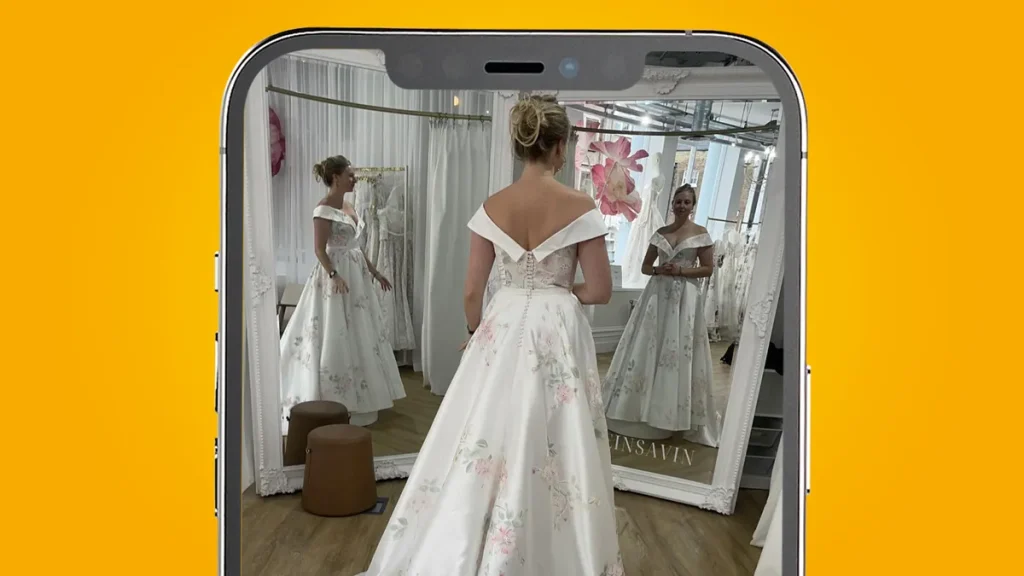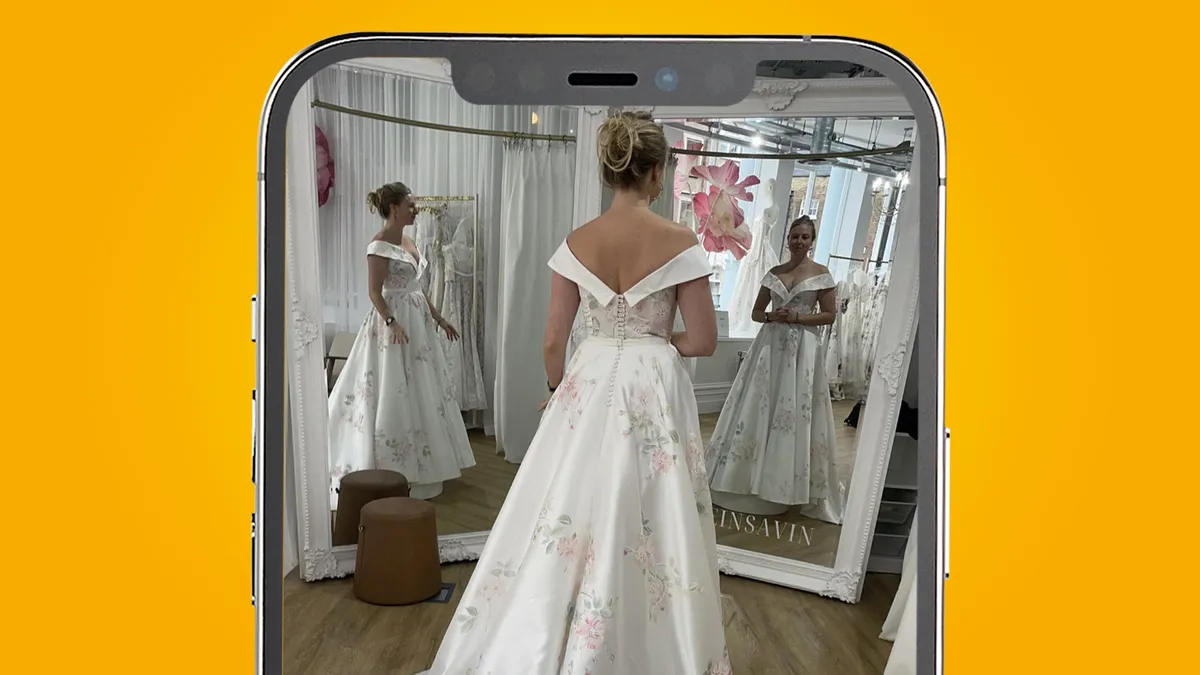The Viral ‘Glitch in the Matrix’ iPhone Wedding Photo Explained
Ever since ‘the dress’ captivated the internet and puzzled our perceptions in 2015, with some viewers seeing it as white and gold while others saw black and blue, a series of similar optical illusions have emerged, sparking viral sensations.

The most recent addition to this trend is the ‘glitch in the Matrix’ wedding dress iPhone photo that has left Instagram users scratching their heads and igniting discussions about computational photography. In the iPhone 12 photo, Tessa Coates, who shared the image on Instagram, stands before two mirrors while wearing a wedding dress.
At first glance, everything appears normal, but a closer look at the mirrors reveals that the reflection shows the subject in two entirely different poses from the actual person in the dress. So, what’s the explanation for this intriguing phenomenon?
Tessa Coates clarified in the photo description that it’s a “real photo, not Photoshopped, not a pano, not a Live Photo.” This led many to speculate that the photo might expose a quirk in the iPhone’s computational photography processing, possibly related to its inability to recognize mirrors.
According to this theory, the absence of mirror detection meant that the iPhone’s multi-frame processing, a technique employed by most modern smartphones, interpreted the scene as having three separate subjects instead of one.
Consequently, it combined three different frames, each with distinct poses, resulting in the final image. However, there is a critical flaw in this argument. A typical indoor, daylight photo taken with an iPhone generally features a shutter speed of at least 1/100 second (as is the case with this photo), and Apple’s Deep Fusion processing, introduced with the iPhone 11, rapidly combines nine images.
Given this speed, it’s highly unlikely that the subject could change poses so dramatically during the photo’s capture, unless she possessed the superhuman agility of Dash from The Incredibles. So, what is the actual explanation for this puzzling photo? Despite Tessa Coates’ insistence that it’s not a panorama (or pano), the most plausible explanation has always been that it is indeed a panorama image.
Further investigation by renowned YouTuber iPhonedo supports this theory and strongly suggests it as the likely scenario.
The evidence lies in the photo’s metadata, which reveals a resolution of 3028 x 3948, differing from the native resolution of the iPhone 12 it was taken with (which is 3024 x 4032). Additionally, the photo lacks the iPhone’s native 4:3 aspect ratio.
However, it’s understandable why even the Apple Genius Bar (consulted by Tessa Coates for an explanation) did not identify the photo as a panorama; it lacks the panorama symbol in its ‘info’ section. The valuable lesson to be drawn from this intriguing incident is that when you fail to complete a full sweep along the guideline that appears when you tap ‘pano’ on the iPhone, the device still captures a smaller panoramic photo, albeit without labeling it as such.
After conducting several panorama tests in both landscape and portrait modes, it has been confirmed that this is true. Since panoramic photos stitch together several different shots over a more extended period than multi-frame processing, this explains the varied poses observed in the wedding dress photo.
Someone likely accidentally switched their phone to ‘pano’ mode when capturing the image. This explanation offers a much simpler solution than the intricate neuroscience investigations that followed the viral sensation of the blue-and-black dress in 2015. Now, you have a new iPhone camera trick to experiment with during the holidays or next Halloween.


